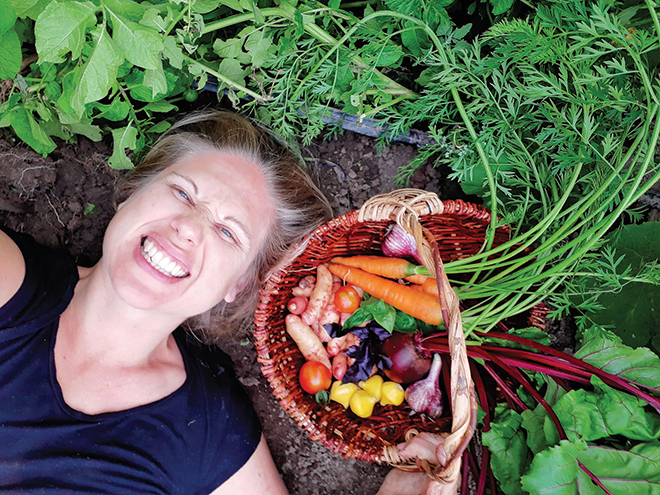By Terri Smith –
“And roots, if they are to bear fruits, must be kept well in the soil of the land.”
—Pearl S. Buck, “The Good Earth”
As a bio-dynamic farmer, I have always felt that plants need soil. Feeding the soil has always been my highest priority in the garden. If you feed the soil well, it will be lively and good, and it will reward you with beautiful plants that provide the tastiest and most vibrant food imaginable.

Because of this I have always felt sceptical about plants grown hydroponically. In hydroponics, plants are not grown in soil. Instead, they are grown in a ‘growing medium,’ usually indoors where no real sunlight reaches them, no gentle breeze washes over them, and no birds can sing to them. Their roots are fed a solution of nutrients that are supposed to provide everything the plant needs to grow into food.
This always seemed wrong to me. I don’t like food being taken away from nature. I don’t know very much about hydroponics, other than that it has always made me uncomfortable. There is more going on in the relationship between plants and soil than we can possibly understand. The idea of plants being moved indoors and out of the soil has always frightened me. It feels like a dystopian nightmare—a futuristic world that has destroyed its connection to the earth.
And then I came across a podcast talking about this exact problem. The podcast is called “Green Dreamer,” and I recommend it to everyone. One of the episodes is an interview with Dave Chapman about The Real Organic Project.
A few years ago, the USDA organic label changed. Once again, no one much noticed except for farmers. While prior to this change only food grown in soil could be labelled “organic” this change allowed hydroponically grown food to now be labelled as “organic” (if grown with “organic” fertilizers), and suddenly soil was no longer a part of the picture.
The Real Organic Project is a grassroots, farmer-led movement created to distinguish soil-grown and pasture-raised products under USDA organic.
In 1995 when the original USDA certified organic labelling began, organic meant: “an ecological production management system that promotes and enhances biodiversity, biological cycles, and soil biological activity. It is based on minimal use of off-farm inputs and on management practices that restore, maintain, and enhance ecological harmony.”
But with the new rules, animals who live in feed lots who never see the sun nor touch the soil, and plants grown hydroponically can all be certified as organic and when we buy that food we have no way of knowing whether soil has had any part to play in its creation. This is not okay. Let me say that again: this is not okay!
So, a large group of farmers have begun a movement to create a label within the label that allows consumers to know which food is actually organic.
If you want to learn more please visit the website at: www.realorganicproject.org.
Another episode on the same podcast talks about soil. The relationship between the soil and the mycorrhizal fungi in the soil is amazing. The plant provides the fungi with sugars the plant has obtained through photosynthesis, and in exchange, the fungi gives the plant nutrients it has broken down out of the mineral and organic content of the soil. These nutrients and minerals from the fungi are in their most bio-available form, meaning that the plant is able to absorb and utilize them easily. When we eat the plant, the nutrients we receive are in their most bio-available form for our bodies.
Studies are now showing that plants grown without soil and without this connection with mycorrhizal fungi contain nutrients that are not very bio-available. This means that when we eat these plants, we are not able to absorb or use many of the nutrients and minerals present. Consequently, we may eat a lot of food, but because our bodies do not receive enough nutrients from the food, we do not feel full and so we keep eating. The consequence of this for our bodies is a paradoxical one: we have become a nation where obesity and malnutrition are occurring simultaneously, within the same bodies! There has never been a time in human history where this has happened.
It seems the Green Dreamer website no longer exists, but the podcasts can still be found here: radiopublic.com/green-dreamer-sustainability-and-Ww0Pb5/ep/s1!28818, Episodes: 141 and 142.
An erstwhile market gardener and mother of goat, Terri lives on a small farm near Quesnel, BC. There she gardens, makes art, writes about local food, teaches workshops, and works at Long Table Grocery as Guardian of the Vegetables.
